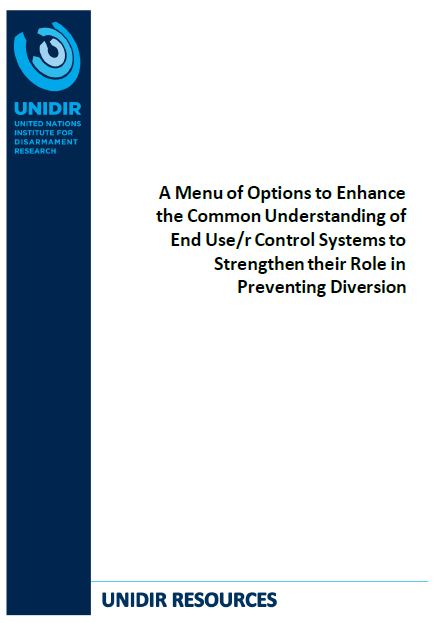The diversion of authorized conventional arms transfers, including small arms, poses a persistent problem for security at the global, regional and national levels, and lies at the heart of the illicit proliferation of arms. Evidence from diversion cases suggests that differences between national end use/r control systems (in particular the content, format and use of end use/r documentation), as well as a lack of common understanding of definitions and information to be shared among relevant stakeholders, help to facilitate diversion.
Therefore, States in multilateral forums have called for an examination of ways to enhance the common understanding of end use/r control systems to strengthen their role in preventing diversion.
The Arms Trade Treaty (ATT), and the working group on effective treaty implementation (WGETI), provide an opportunity to undertake such an examination. The issue of end use/r controls is pertinent for Article 11, but also Articles 7, 8, 9, and 10. This menu of options is intended as a ‘food-for-thought’ contribution to the work of the WGETI, in particular the sub-working group on Article 11, in conjunction with preparations for the ATT Conferences of States Parties in 2019 and 2020.
Citation: Paul Holtom, Himayu Shiotani, and Sebastian Wilkin (2019) "A Menu of Options to Enhance the Common Understanding of End Use/r Control Systems to Strengthen their Role in Preventing Diversion", UNIDIR, Geneva. https://doi.org/10.37559/CAAP/19/WAM/02
